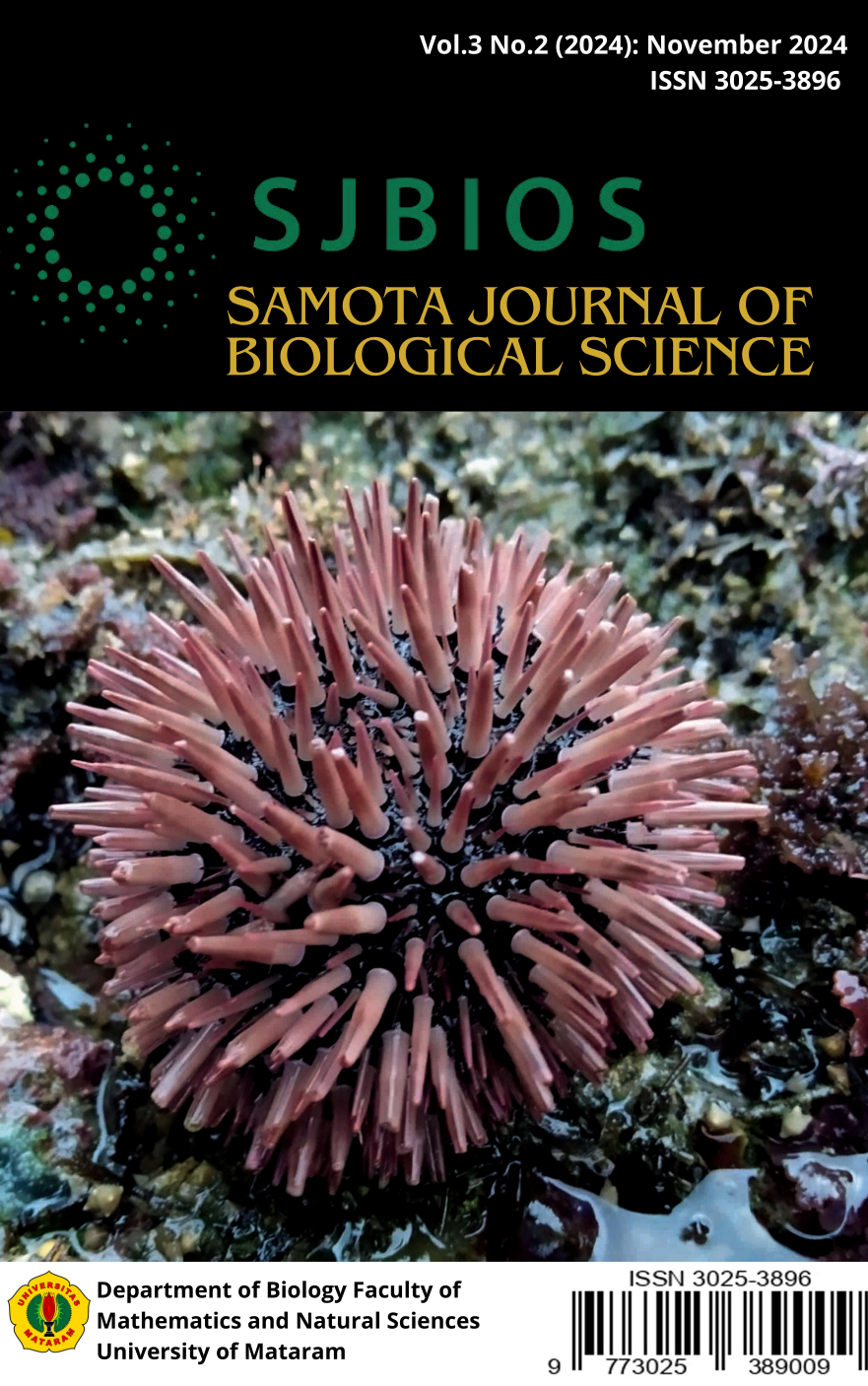Jaringan Sekresi Pada Tanaman Dysoxylum parasiticum Osbeck (Meliaceae) di Mataram, Lombok
DOI:
https://doi.org/10.29303/sjbios.v3i2.5049Keywords:
Jaringan sekresi, Dysoxylum parasiticum, Meliaceae, anatomi tumbuhan , lombokAbstract
Dysoxylum parasiticum is a flowering plant from the Meliaceae family. This plant has a number of secondary metabolite compounds that have not been specifically identified at the anatomical and tissue level. The presence of secondary metabolite compounds can be identified through the presence of secretory tissue in plants. The aim of this research is to determine the structure, type and location of the secretory tissue in the stem and leaf organs. Preparations were made using the fresh preparation method, and slicing using the free-hand section method, with Tuloidine blue O 0.025% staining. The results show that the secretory tissue has an elongated channel structure like a lumen surrounded by epithelial cells. The location of the secretory tissue in the stem is evenly distributed in the cortex and pith, in the petiole of the leaf it is only found in the cotex, and in the leaf blade, the secretion ducts are found in the cortex of the midrib and the mesophyll of the leaf blade.
Downloads
Published
Issue
Section
License
Copyright (c) 2024 Tri Mulyaningsih

This work is licensed under a Creative Commons Attribution-NonCommercial 4.0 International License.




















